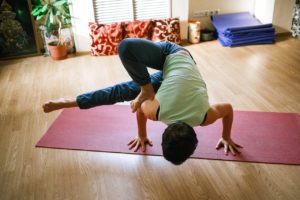Creating an effective fitness routine starts with understanding different types of exercise and learning how to structure them in a balanced, sustainable plan. Whether you want to boost your energy, improve strength, support weight management, or enhance overall well-being, knowing how to combine the right workouts can make your journey easier and more enjoyable. This guide breaks down essential exercise types and offers practical planning tips to help you build a workout routine that fits your lifestyle.
1. Understanding the Main Types of Exercise
Cardiovascular (Aerobic) Training
Cardio workouts elevate your heart rate and strengthen your cardiovascular system. These include activities like running, cycling, brisk walking, swimming, and dancing. Regular aerobic training helps improve endurance, burn calories, and support heart health while boosting your mood and overall energy levels.
Strength Training
Strength or resistance training focuses on building muscle, increasing bone density, and improving metabolic health. This can be achieved using free weights, machines, resistance bands, or even bodyweight exercises like squats, lunges, and push-ups. Incorporating strength work two to three times per week helps sculpt the body and supports long-term functional movement.
Flexibility Training
Flexibility exercises target muscle lengthening and joint mobility. Stretching routines, yoga sessions, and mobility flows enhance posture, reduce tightness, and help prevent injuries. Consistent flexibility work is especially important if you sit for long periods or perform high-intensity workouts.
Balance & Stability Training
Balance-focused exercises improve coordination, proprioception, and overall stability. Techniques such as single-leg movements, Pilates, stability ball exercises, and balance board work can strengthen your core and enhance everyday movement.
Mind–Body Workouts
Activities like yoga, tai chi, and mindful movement practices combine physical activity with mental relaxation. These routines help reduce stress, improve focus, and support overall emotional well-being while strengthening the body.
2. How to Create an Effective Exercise Plan
Define Your Goals Clearly
Start by identifying your main objectives—whether it’s weight loss, muscle gain, improved flexibility, stress relief, or general fitness. Your goals will shape your workout frequency, intensity, and exercise selection.
Balance Different Training Types
A well-rounded fitness plan includes a mix of cardio, strength, flexibility, and recovery days. Combining various workout styles not only boosts overall performance but also prevents burnout and plateaus.
Choose Activities You Enjoy
Sticking to a routine becomes easier when you actually like your workouts. Try different forms of exercise until you find what feels motivating, energizing, and fun for you.
Schedule Your Weekly Routine
Consistency is key. Plan your workouts in advance to match your lifestyle. For example:
- 2–3 days of strength training
- 2–4 days of cardio
- Daily light stretching or mobility work
- 1–2 days of rest or active recovery
Adjust these depending on your goals and fitness level.
Listen to Your Body
Progress happens when you challenge yourself—but not at the cost of overtraining. Pay attention to fatigue, soreness, and stress levels. Rest when needed and modify workouts to avoid injury.
Track Your Progress
Monitoring your workouts—whether through a journal, app, or wearable device—helps you stay accountable and shows how far you’ve come. Tracking also makes it easier to identify what works best.
3. Tips for Long-Term Success
- Warm up before every session and cool down afterward.
- Increase intensity gradually to avoid injury.
- Hydrate well and fuel your body with balanced nutrition.
- Mix up your training every few weeks to stay motivated.
- Celebrate progress, not perfection.
Building a smart exercise plan is not about perfection—it’s about finding a sustainable rhythm that supports your goals and fits your life. By understanding exercise types and planning your weekly routine strategically, you can create a fitness journey that improves your strength, confidence, and overall well-being.






